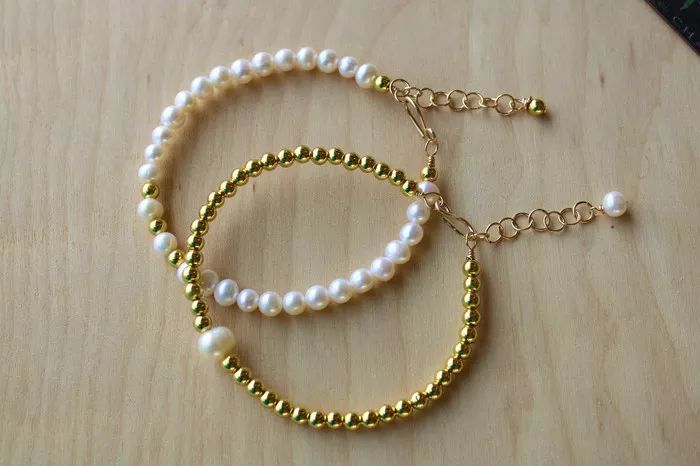In recent years, the popularity of healing bracelets has surged, with claims ranging from pain relief to emotional balance and overall wellness enhancement. These bracelets often incorporate various materials such as crystals, magnets, or metals, each purported to possess unique healing properties. While anecdotal evidence and personal testimonials abound, the scientific community remains skeptical about the effectiveness of these bracelets. This article delves into the origins of healing bracelets, the purported mechanisms behind their alleged benefits, and critically examines the scientific evidence to determine whether these claims hold water.
Origins and Historical Context
Healing bracelets have a rich historical background, rooted in ancient civilizations’ beliefs in the healing powers of natural materials. From ancient Egypt to China and Greece, cultures have incorporated gemstones and metals into jewelry for their perceived therapeutic benefits. These traditions continue to influence modern healing bracelet designs, where proponents assert that wearing specific combinations of materials can influence one’s energy flow, alleviate ailments, and promote overall well-being.
Common Materials and Their Alleged Benefits
Healing bracelets typically feature materials such as:
Gemstones and Crystals: Each type of gemstone is believed to possess unique metaphysical properties. For example, amethyst is often associated with stress relief and spiritual growth, while rose quartz is thought to promote love and emotional healing.
Magnets: Magnetic bracelets are purported to alleviate pain, particularly in conditions like arthritis and muscle soreness, by improving blood circulation and reducing inflammation.
Metals: Copper bracelets, for instance, are believed to have anti-inflammatory properties and aid in joint pain relief.
Mechanisms of Action
Advocates of healing bracelets propose various mechanisms through which these accessories exert their effects:
Energy Balancing: It is claimed that certain materials can realign or balance the body’s energy fields, promoting harmony and vitality.
Electromagnetic Influence: Magnetic bracelets are said to interact with the body’s electromagnetic field, potentially improving circulation and reducing pain.
Placebo Effect: The power of belief and expectation may play a significant role in perceived benefits, especially in subjective measures like pain relief and mood enhancement.
Scientific Evidence and Skepticism
Despite widespread use and anecdotal support, scientific studies on healing bracelets have yielded mixed results at best. Critical reviews often highlight methodological flaws, small sample sizes, and lack of rigorous controls as significant limitations. While some studies suggest potential benefits, such as modest pain relief or improved mood, these findings are typically inconclusive and require further validation through robust clinical trials.
Clinical Studies and Meta-Analyses
A comprehensive review of existing literature reveals:
Pain Relief: Studies investigating magnetic bracelets for pain relief have shown conflicting outcomes, with some reporting positive effects and others finding no significant difference compared to placebos.
Psychological Effects: The placebo effect appears to play a prominent role in subjective outcomes such as anxiety reduction and improved sleep quality associated with wearing healing bracelets.
Physical Health: Evidence supporting claims of physical health benefits remains limited, with most studies failing to demonstrate consistent and reproducible effects beyond placebo.
See Also: How to Tell if My Chakra Bracelet Is Real?
The Placebo Effect: Friend or Foe?
While skeptics may dismiss healing bracelets as mere placebos, proponents argue that the placebo effect itself can be a potent healer. Placebo responses are complex and involve neurobiological mechanisms that can lead to real physiological changes, albeit temporarily. Harnessing the placebo effect ethically remains a topic of debate in medical and psychological research.
Ethical Considerations and Consumer Awareness
As the market for healing bracelets continues to expand, ethical concerns arise regarding marketing claims and consumer expectations. Regulatory bodies in some countries have scrutinized manufacturers’ claims to ensure transparency and prevent misleading advertising. Educating consumers about the limitations of scientific evidence and the potential risks of relying solely on alternative therapies is crucial in promoting informed decision-making.
Conclusion
In conclusion, the question of whether healing bracelets work remains contentious. While proponents cite centuries-old traditions and personal experiences as evidence, the scientific community demands rigorous empirical validation through well-designed studies. As with many alternative therapies, the placebo effect likely contributes to reported benefits, highlighting the complex interplay between belief, perception, and physical health outcomes. Moving forward, interdisciplinary collaboration and robust research efforts are essential to elucidate the mechanisms underlying any potential therapeutic effects and to provide evidence-based recommendations for consumers. Ultimately, individuals considering the use of healing bracelets should weigh personal beliefs against available scientific evidence and consult healthcare professionals as needed to make informed choices about their health and well-being.

